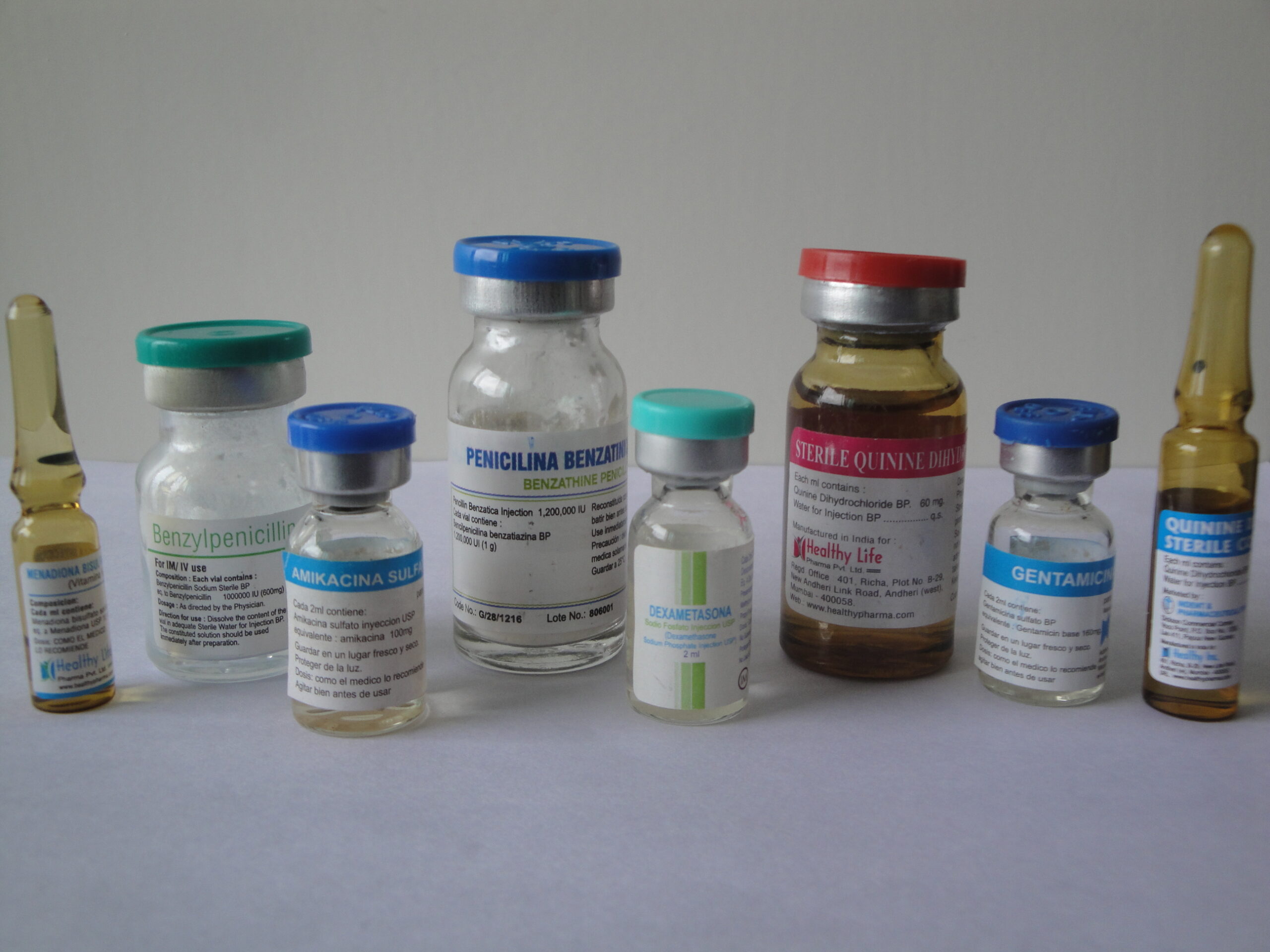Description
Gentamicin injection
Gentamicin is an antibiotic medication commonly used to treat bacterial infections. in Gentamicin injection stands for “Intramuscular” or “Intravenous Parenteral,” indicating that the medication is intended for administration through either intramuscular or intravenous routes.
Here are some key points about Gentamicin injection
Type of Medication: Gentamicin is an aminoglycoside antibiotic. It is effective against a wide range of bacteria, but it is usually reserved for serious infections due to the potential for side effects.
Administration: The medication can be administered either intramuscularly (into the muscle) or intravenously (directly into the bloodstream). The choice of route depends on the severity of the infection and the patient’s condition.
Indications: Gentamicin is often used to treat various bacterial infections, including those affecting the respiratory, urinary, and gastrointestinal systems. It may also be used in combination with other antibiotics for more comprehensive coverage.
Dosage: The dosage of Gentamicin varies depending on the specific infection being treated, the patient’s weight, and kidney function. It is crucial for healthcare professionals to calculate the appropriate dosage to minimize the risk of side effects.
Monitoring: Gentamicin can have potential side effects, particularly on the kidneys and hearing. Therefore, patients receiving Gentamicin may require regular monitoring of kidney function and hearing, especially if the treatment duration is prolonged.
Precautions and Contraindications: Gentamicin may not be suitable for everyone. Individuals with pre-existing kidney problems, hearing issues, or hypersensitivity to aminoglycoside antibiotics should exercise caution or may not be eligible for this medication.
Side Effects: Common side effects may include nausea, vomiting, and dizziness. However, serious side effects such as kidney damage or hearing loss are possible, especially with prolonged use or high doses.
It’s important to note that the information provided here is for general knowledge, and specific details may vary based on the formulation, manufacturer, and region. Always follow the instructions and recommendations provided by healthcare professionals and the prescribing information accompanying the medication. If you have any questions or concerns about Gentamicin or its administration, it is best to consult with a healthcare professional for personalized advice.
Gentamicin is an antibiotic that belongs to the aminoglycoside class, and “I.P.” stands for “Intramuscularly” or “Intraperitoneally,” depending on the context. Gentamicin injection is typically used to treat bacterial infections.
Here are some key points about Gentamicin injection I.P.:
Type of Administration: “I.P.” indicates that the medication is intended for intramuscular or intraperitoneal administration. Intramuscular injections are given into the muscle, while intraperitoneal injections are administered into the peritoneal cavity, which is the space that surrounds the abdominal organs.
Bacterial Infections: Gentamicin is effective against a wide range of bacteria, particularly Gram-negative bacteria. It works by inhibiting bacterial protein synthesis, ultimately leading to the death of the bacteria.
Medical Uses: Gentamicin is commonly used to treat various infections, including those of the respiratory tract, urinary tract, skin, and soft tissues. It is also used in the treatment of certain serious infections, such as sepsis.
Dosage and Administration: The dosage and frequency of Gentamicin injections depend on the specific infection being treated, the patient’s age, weight, and renal function. It is crucial to follow the healthcare provider’s instructions carefully.
Monitoring: Gentamicin levels in the blood may need to be monitored regularly to ensure therapeutic levels are maintained without reaching toxic levels. This is important because aminoglycosides like Gentamicin can have side effects, especially on the kidneys and hearing.
Precautions and Contraindications: Gentamicin is not suitable for everyone. It is contraindicated in individuals with known hypersensitivity to the drug, as well as those with severe renal impairment. Precautions are taken to avoid potential toxicity, especially in patients with kidney problems.
Side Effects: Common side effects may include nephrotoxicity (kidney damage), ototoxicity (damage to the inner ear leading to hearing loss), and neuromuscular blockade. Monitoring for these side effects is crucial during treatment.
Pregnancy and Lactation: Gentamicin should be used with caution in pregnant women, and its benefits should outweigh potential risks. It can also be excreted in breast milk, so its use during lactation should be carefully considered.
It is important to note that the information provided here is a general overview, and specific details may vary based on the formulation, dosage, and individual patient characteristics. Always consult with a healthcare professional for personalized advice and information tailored to your specific situation.



